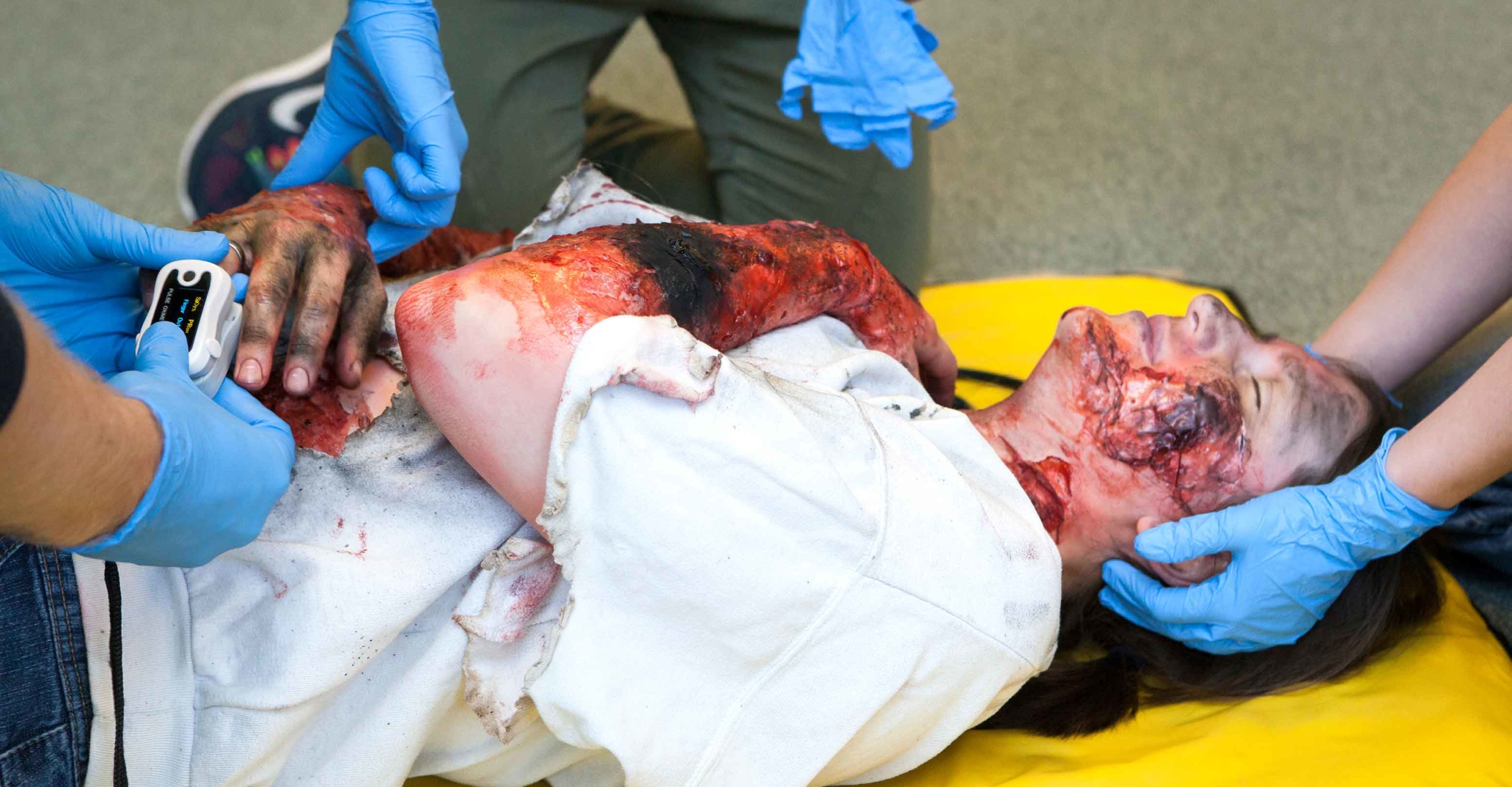In our patient assessment scenarios during lab training, every one of us learned to regurgitate scene safety and body substance isolation protocols.
But did we really look over the scene? Did we really take the time to determine if we needed to wear more than gloves? The answer to both questions is “unlikely.” We just wanted our check marks for the National Registry check sheets. How many of us had instructors who would introduce an unexpected safety issue at some point during patient assessment scenarios? I didn’t.
While some of you were fortunate enough to have this happen regularly, most of us were not. And we all know the routine we develop in the lab follows us out into the prehospital setting.
This has created some issues that needed to be addressed with updated terminology.
Scene safety vs. situational awareness
Scene safety
The first issue is the term “scene safety” for patient assessment scenarios. Our evaluation of a scene should start at the time of dispatch. You should be thinking about the area of town you are entering.
With that said, don’t lull yourself into a false sense of security simply because you are responding to a higher-end community. Violence can happen anywhere. We also should be thinking about previous responses to the location. Ask yourself:
- Is it a private or public building?
- Where are the exits?
- Is it highly populated or just a couple of people inside a private residence?
- Upon arrival, how did I evaluate the scene and enter?
Situational awareness
As an industry, we have changed “scene safety” to “situational awareness.” The reason is just like during the initial training, numerous responders were arriving on the scene, giving the house a once over — essentially getting the check mark — and then entering the scene without continuing to assess the situation.
Our patient assessment scenarios are not static, they are dynamic. A scene with the same frequent flyer with the same complaint he or she has had every time before still is a dynamic scene, regardless of how many times you have responded to that same location.
Crews regularly fail to continually evaluate the scene and maintain situational awareness, which results in crews putting themselves into situations they should not have, then someone gets hurt.
You just never know when that drunk patient you have responded to dozens of times is going to sit up and start swinging. But it isn’t just the patient we have to worry about. We also need to continually re-evaluate the residence or building during patient assessment scenarios.
Carbon monoxide is odorless and colorless, and you may not immediately recognize the patient is unconscious because the furnace failed and is pushing carbon monoxide into the environment.
The incidence of carbon monoxide poisoning also coincides with flu season and initial presentations are similar. Had you maintained your situational awareness, there were clues that could have warned you, such as the time of year and the use of an indoor heating device.
Body substance isolation vs. standard precautions
The second terminology change is body substance isolation or BSI. What did body substance isolation teach us? Basically, “if it is wet and not yours, don’t touch it without gloves.”
First of all, gloves are not the only piece of protective equipment we should wear. Per the Occupational Safety and Health Administration, you must wear, at a minimum, gloves and eye protection on every call from before you exit your vehicle until you transfer care at the hospital.
The new term replacing body substance isolation is “standard precautions.” The reason is you don’t always see the wet stuff and healthcare providers were not wearing gloves for every patient throughout the duration of patient care.
Healthcare workers who were coming into contact with lesions — herpes and MRSA lesions, to be specific — failed to recognize the issue, then touched themselves, transferring the infection.
How many times per day do you touch your face? So often you don’t recognize you’re doing it unless something unusual catches your attention.
Is there moisture in a lesion? Yes. Abreva cold sore medication works by drying out the lesion so it will heal faster.
Gloves are not optional for providers
Lots of us are guilty of not wearing gloves on non-critical patients for the entire transport. Private ambulance is to blame for a large part of this mindset.
The agency I used to work for only gave us 20 minutes to transfer care at the hospital, complete the patient care report and clean the unit.
So, what do we do? We take our gloves off and start the patient care report in the back of the ambulance during transport. We take that last set of vital signs without gloves. Then, we move the patient from bed to bed without gloves and pull the sheets off the gurney without gloves.
The most recent trend is popping the nitrile off the index finger. I have seen nurses do this a lot, but paramedics are guilty too. The thinking is they can better palpate the vein without a glove. Nitrile and even latex, for that matter, do not keep you from finding veins. Gloves aren’t that thick.
In my experience, physicians are the worst when it comes to not wearing gloves. They don’t perform a lot of procedures during treatment, with intubation and central lines being a common exception. Outside of that, they stand back and manage the treatment while observing, so most of the hands-on stuff comes during a standard, non-critical patient assessment. The physician uses hand sanitizer as he or she enters the room, and we all know hand sanitizer does not eliminate all flora present. The physician then completes the assessment, talks to the patient and leaves, grabbing more hand sanitizer on the way.
Take body substance isolation and situational awareness to heart. The last thing you want is to contract an infection or take it home to your loved ones.


